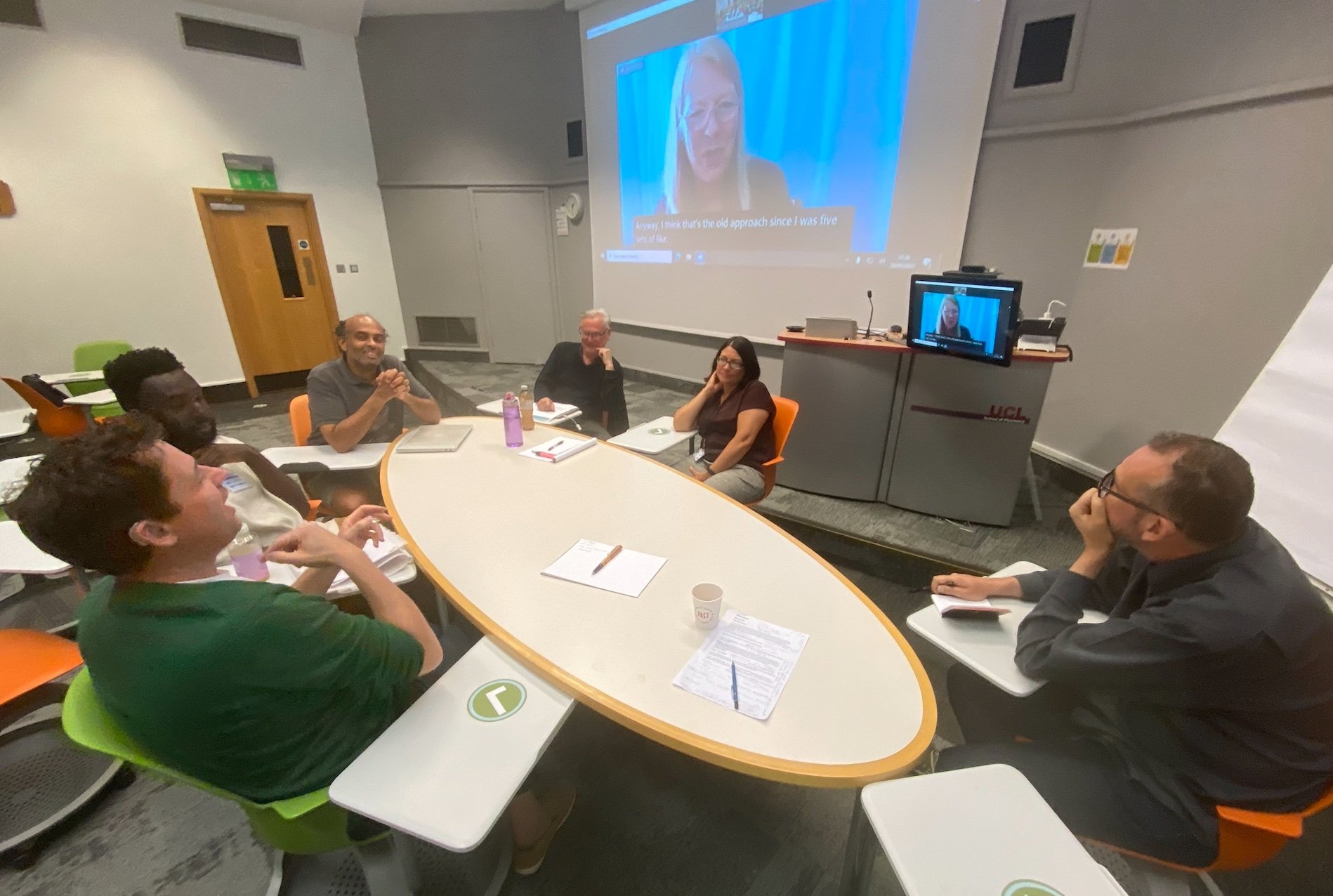Vibrant Spaces
2022
Vibrant Spaces is an ongoing project to bring Deaf Culture and deaf creativity into built environment education and practice. Rich ideas around Deaf Gain and DeafSpace (what signing in partciular brings to the design of built space) have had little impact on mainstream built environment education and practice. At the same time the proportion of deaf people in architecture education and practice internationally remains tiny.
Deaf people are excluded both because of limited secondary educational opportunites and because of lack of access to, and discrimination in, architectural education and practice. Increasing deaf inclusion benefits both creative deaf people and the diversity of architecture and related disciplines. It also supports people who become deaf during their studies or employment but tend not to disclose because of societal stigma.
DisOrdinary Architecture undertook the initial development workshop in July 2021, co-exploring with D/deaf architects and artists what a short course for D/deaf people interested in studying architecture would look like. The project builds on the already existing foundation-level short course Architecture Beyond Sight (ABS) which aims to brings more blind and partially sighted people into built environment education.
Project Aims
• Work with Deaf architects and artists to develop alternative models of architectural and spatial education and practice, building from the rich creativity of Deaf Gain, Deaf Culture and DeafSpace;
• Co-design and test a prototype short course for D/deaf and becoming deaf people that can increase their creative and critical presence and visibility across built environment disciplines;
• Build the confidence, knowledge and skills of D/deaf and becoming deaf participants by introducing them to concepts of Deaf Gain, Deaf Culture and DeafSpace;
• Enable deaf people to create a design portfolio suitable for their own personal and career development;
• Develop Deaf-led design/making activities, to inform inclusive workshop and design studio improvements that can benefit all students and practitioners;
• Capture development and implementation phases, to demonstrate and amplify the value of Deaf-led design approaches and methods.
Many thanks to Christoph Lindner, Dean of The Bartlett Faculty of the Built Environment for seedbed funding, and to the workshop participants - Deaf and partially deaf architects Richard Docherty, Chris Laing, Martin Glover and Richard Gatti, as well as Deaf artist Aaron Williamson.



